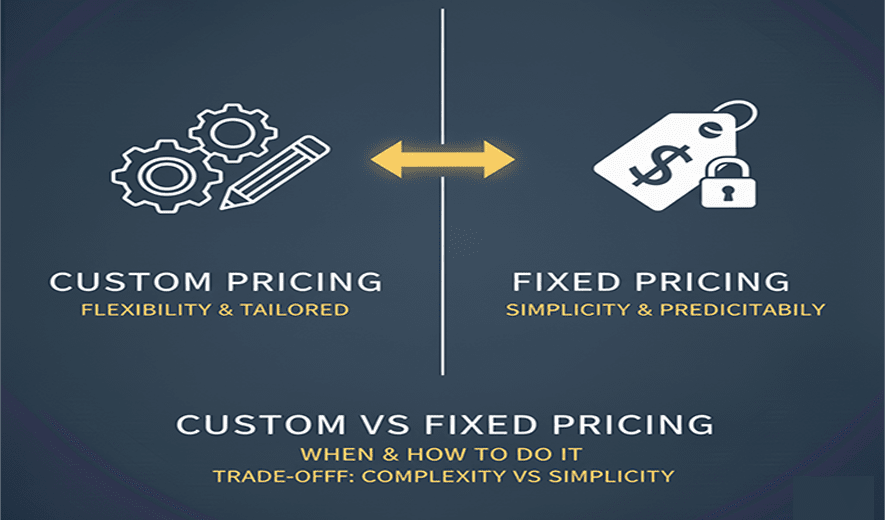
Offering Custom vs Fixed Pricing: Trade-offs
The main trade-off between custom and fixed pricing lies in flexibility versus predictability. Custom pricing, or dynamic pricing, allows for tailored quotes that capture a customer's specific needs and willingness to pay, potentially maximizing revenue but requiring more resources. Fixed pricing, or standard pricing, offers simplicity and transparency, which can build trust and streamline sales, but it can also limit profit and flexibility.
Custom pricing: Pros and cons
Custom pricing involves tailoring prices for individual customers based on factors like requirements, purchase volume, or service levels. This approach is common in B2B transactions and for specialized or complex services.
Pros
- Maximizes revenue: Custom pricing allows you to charge more for specific, high-value customizations, capturing the maximum amount a customer is willing to pay for a tailored solution.
- Enhanced customer loyalty: The personalized approach makes customers feel valued, which can strengthen relationships and encourage repeat business.
- Competitive differentiation: Offering a custom product or service can set you apart from competitors who only provide a standard product and price.
- Accommodates complex needs: It is ideal for projects where the scope and features are not static and need to evolve with the client.
Cons
- More complex and resource-intensive: Delivering custom quotes requires a sales team and robust internal systems to manage and track individual customer needs, which is a significant upfront investment.
- Less transparent: The lack of a public price can create distrust if customers feel the pricing is unfair or if they later discover a competitor paid less for a similar service.
- Longer sales cycles: Preparing personalized quotes takes more time, which can extend the negotiation phase.
- Risk of misestimation: For the seller, accurately scoping and pricing a complex project is difficult. An inaccurate estimate can lead to lower profitability if costs exceed the quoted price.
Fixed pricing: Pros and cons
Fixed pricing is the traditional model where a set price is offered to all customers, regardless of their specific needs. It is best suited for standardized products or services with stable costs and predictable demand.
Pros
- Simplicity and transparency: With a clear, public price, customers know exactly what to expect, which simplifies the buying process and builds trust.
- Operational efficiency: Fixed pricing is simpler to implement and manage, with lower administrative overhead for quoting, billing, and sales.
- Predictable revenue: Businesses can more easily forecast revenue and budget their operations when they know what they will be paid for a product or service.
- Reduced risk for the buyer: Customers with a fixed-price contract know their maximum costs upfront, protecting them from unexpected expenses.
Cons
- Missed revenue opportunities: Fixed pricing does not allow for capturing additional revenue from customers who are willing to pay more for added value or premium features.
- Inflexibility to market changes: This model can make it difficult to adapt to fluctuating costs or market demand. If costs increase, profit margins can shrink, and raising prices may risk losing customers.
- Incentivizes cutting corners: If a project becomes more difficult than initially planned, a seller on a fixed-price contract might be tempted to cut quality to protect their profit margin.
